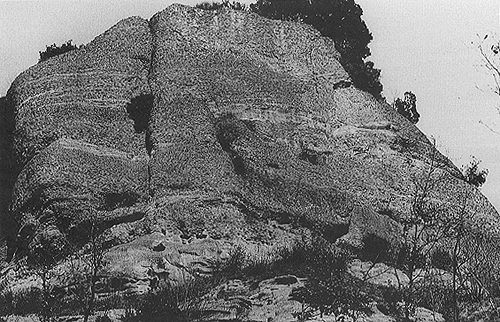
Structureless beds (lenticular)
Plate 19

Structureless beds (lenticular)
Plate 19
In this plate, as in the previous one, coarse clastics prevail but consist of fluvial pebbles. Some lenses of sandstone, interbedded at various levels, emphasize the bedding, which is poorly defined where sandstone beds are absent (see center-left of picture). In a case like this, the vertical stratigraphy changes from place to place (imagine coring this section in different spots), and thickness measurements have a purely local value.
Even if you are not able to precisely define the geometry of every bed, the overall style can be described: the lack of parallelism implies a lateral variability of bed thickness, and the presence of closures, or terminations. These can be seen in the outcrop or reasonably extrapolated to its surroundings. In other terms, you can say that the bedding is laterally discontinuous. Remember that the concept of lateral discontinuity must not be confused with that of vertical discontinuity; the former is spatial, and expresses the localization or confinement of sedimentation; the latter is temporal, and indicates breaks in deposition.
The outcrop shows what could be an older equivalent of the deposits illustrated in figure 11 of the introduction, i.e., alluvial gravel with subordinate sand. The structureless beds were emplaced by mass flows during fluvial floods; flood events are fluid-driven, in contrast with the gravity-driven flows of the previous plate.
Pliocene Intra-apenninic Basin, Livergnano, northern Apennines.